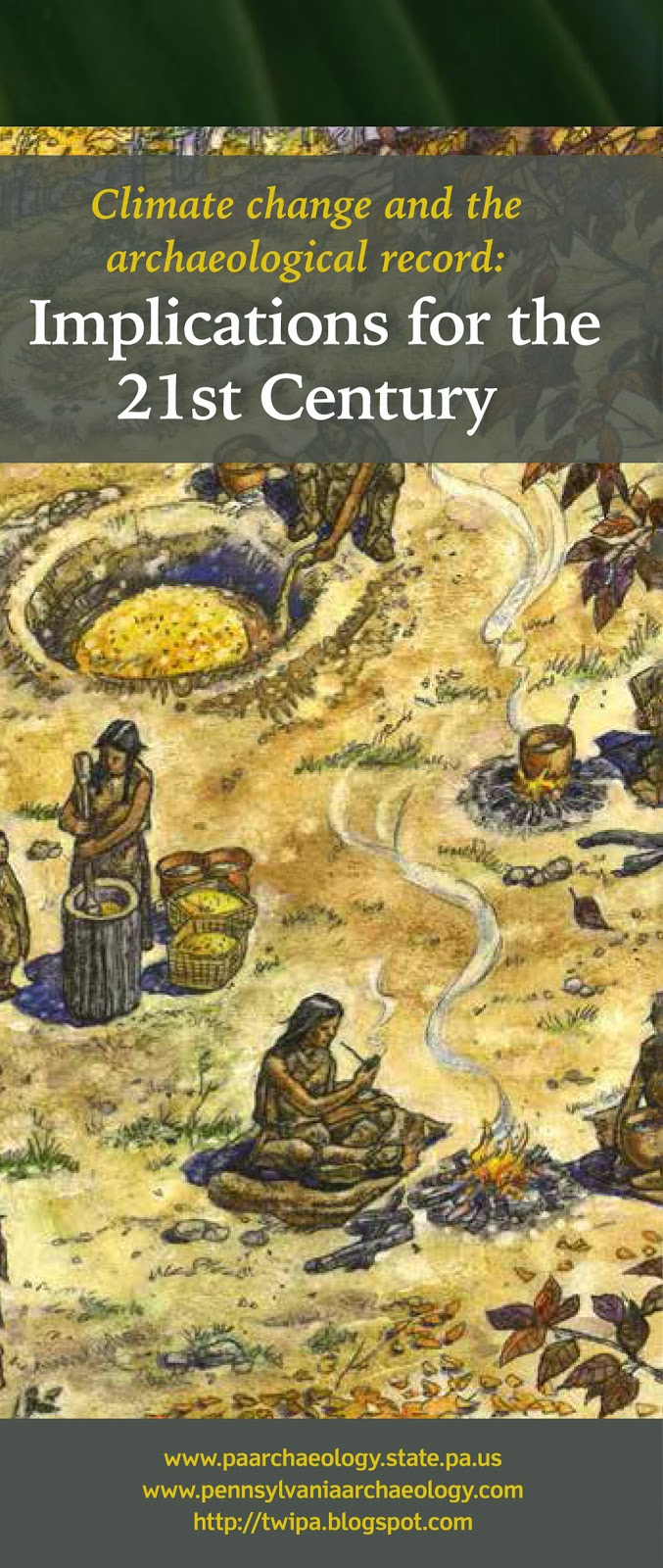The subject of archaeology often produces “oohs
& aahs” of intrigue from people, after all it is the science or study of
past human activity via material culture (everyday objects) and their discovery
context (the position / place the artifact was found). As humans we are inherently interested in
where we came from. Consider the
blockbusters Hollywood has created, invoking the romantic idea of what
archaeology is, even if it’s not exactly accurate…
People have been living in Pennsylvania for ~19,000
years. The written record of
Pennsylvania, on the other hand, has only been available for a fraction of that
time, less than 500 years. Were it not
for the scientific excavation and recordation of more than 23,000 sites in
Pennsylvania, we would know little about our earliest residents; how they lived
or how their modes of survival evolved through time. As an example, we know that climate changes overtime
and because we cannot control it we must adapt to it.
 |
| Implications for the 21st Century |
Climate Change was the theme for our 2014
Workshops in Archaeology and our 2015 Farm Show Exhibit. By looking at the strategies that humans of
the past adopted we are able to better prepare for our future.
Among the many functions we, as archaeologists,
serve in the Section of Archaeology at The State Museum of Pennsylvania is
interpreting the importance and value of the extensive archaeological resources
our commonwealth has to offer. We do
this through a variety of means: public outreach, field research, maintenance
and updates to the anthropology and archaeology gallery at The State Museum,
assisting researchers with the examination of our collections and using
existing collections to investigate various research problems, as well as
serving as the principal repository for collections obtained through
Pennsylvania’s cultural resource management (CRM) projects. As such we are responsible for the care and
curation of over six million artifacts representing the entire span of human
occupation in Pennsylvania. We use all
of these methods in an effort to demonstrate how archaeology teaches us about
human endurance, resourcefulness and ingenuity.
Unlike our cinematic icon, Indiana Jones
“destroying every temple he enters” we realize that archaeological sites are non-renewable
resources. This means that when they are
destroyed by construction, neglect or for whatever reason, they are gone
forever. The simple economic concept of
supply and demand assigns value to things in short supply. Therefore the limited nature of sites, the
fact that there will not be any more Paleo-Indian sites or Susquehannock sites created
means that every one of them is valuable due to its scarcity. Each has the potential to teach us something
new that if the site is destroyed or unscrupulously excavated could be lost permanently.
This simple post barely scratches the surface of
the ways archaeology has enriched our lives but hopefully it leaves you intrigued
enough to learn more. If you are
interested in reading more about the value of archaeology please visit our website and peruse our past blogs. They
contain a wealth of information about all aspects of archaeology and what we do
here at The State Museum of Pennsylvania, Section of Archaeology.
For more information, visit PAarchaeology.state.pa.us or the Hall of Anthropology and Archaeology at The State Museum of Pennsylvania .




No comments:
Post a Comment